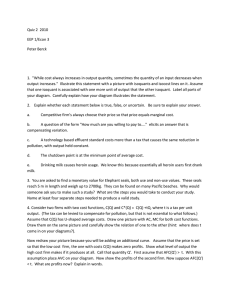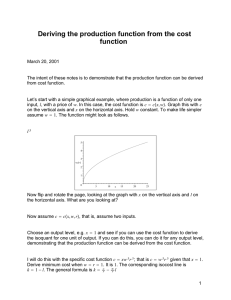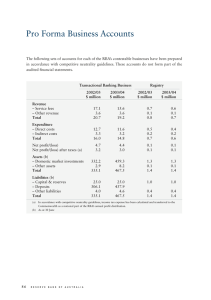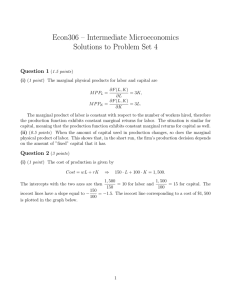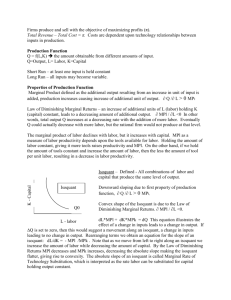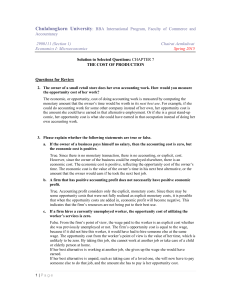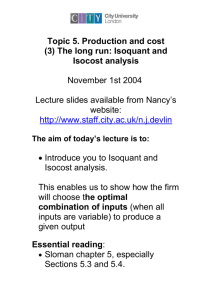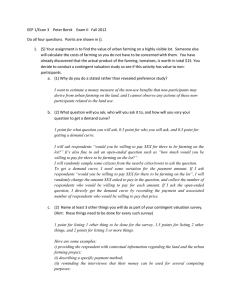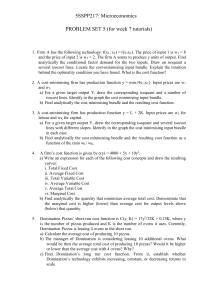14.04 Midterm Exam 1 Prof. Sergei Izmalkov Wed, Oct 1
advertisement
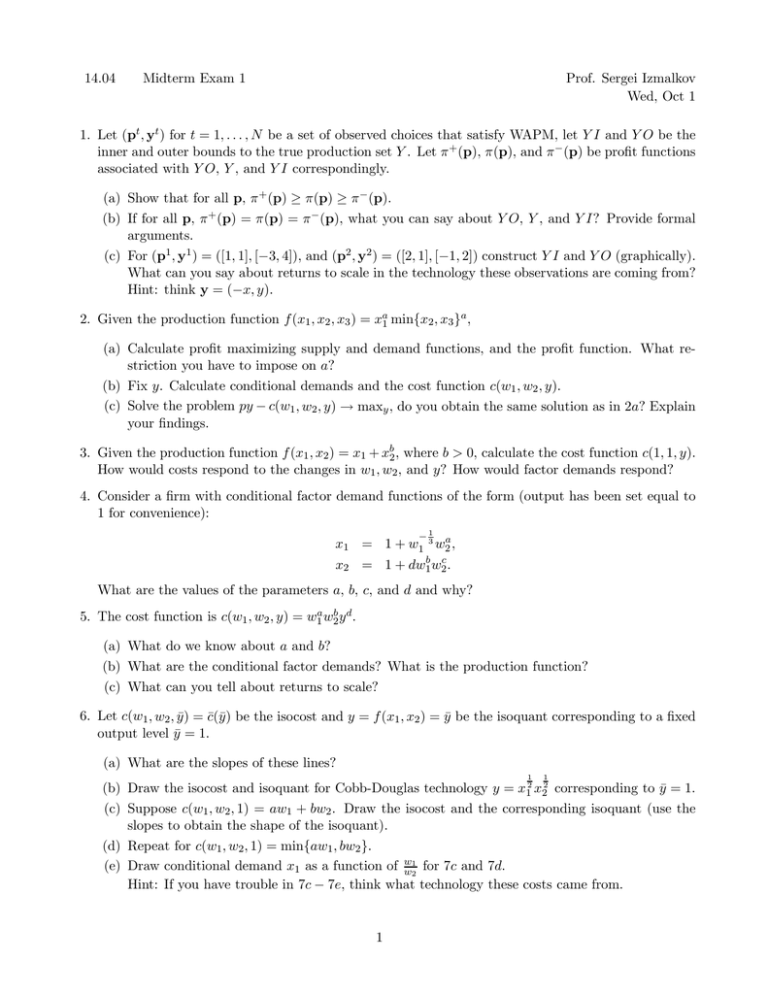
14.04
Midterm Exam 1
Prof. Sergei Izmalkov
Wed, Oct 1
1. Let (pt , yt ) for t = 1, . . . , N be a set of observed choices that satisfy WAPM, let Y I and Y O be the
inner and outer bounds to the true production set Y . Let π + (p), π(p), and π − (p) be profit functions
associated with Y O, Y , and Y I correspondingly.
(a) Show that for all p, π + (p) ≥ π(p) ≥ π − (p).
(b) If for all p, π + (p) = π(p) = π − (p), what you can say about Y O, Y , and Y I? Provide formal
arguments.
(c) For (p1 , y1 ) = ([1, 1], [−3, 4]), and (p2 , y2 ) = ([2, 1], [−1, 2]) construct Y I and Y O (graphically).
What can you say about returns to scale in the technology these observations are coming from?
Hint: think y = (−x, y).
2. Given the production function f (x1 , x2 , x3 ) = xa1 min{x2 , x3 }a
,
(a) Calculate profit maximizing supply and demand functions, and the profit function. What restriction you have to impose on a?
(b) Fix y . Calculate conditional demands and the cost function c(w1 , w2 , y ).
(c) Solve the problem py − c(w1 , w2 , y) → maxy , do you obtain the same solution as in 2a? Explain
your findings.
3. Given the production function f (x1 , x2 ) = x1 + xb2 , where b > 0, calculate the cost function c(1, 1, y).
How would costs respond to the changes in w1 , w2 , and y? How would factor demands respond?
4. Consider a firm with conditional factor demand functions of the form (output has been set equal to
1 for convenience):
−1
x1 = 1 + w1 3 w2a ,
x2 = 1 + dw1b w2c .
What are the values of the parameters a, b, c, and d and why?
5. The cost function is c(w1 , w2 , y) = w1a w2b yd .
(a) What do we know about a and b?
(b) What are the conditional factor demands? What is the production function?
(c) What can you tell about returns to scale?
6. Let c(w1 , w2 , ȳ) = c̄(ȳ) be the isocost and y = f (x1 , x2 ) = ȳ be the isoquant corresponding to a fixed
output level ȳ = 1.
(a) What are the slopes of these lines?
1
1
(b) Draw the isocost and isoquant for Cobb-Douglas technology y = x
12 x22 corresponding to ȳ = 1.
(c) Suppose c(w1 , w2 , 1) = aw1 + bw2 . Draw the isocost and the corresponding isoquant (use the
slopes to obtain the shape of the isoquant).
(d) Repeat for c(w1 , w2 , 1) = min{aw1 , bw2 }.
1
(e) Draw conditional demand x1 as a function of w
w2 for 7c and 7d.
Hint: If you have trouble in 7c − 7e, think what technology these costs came from.
1
